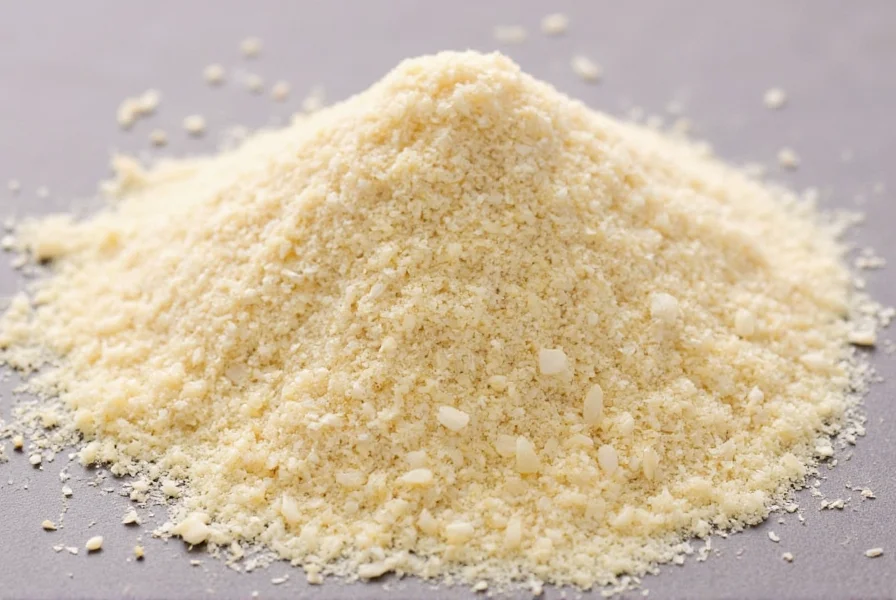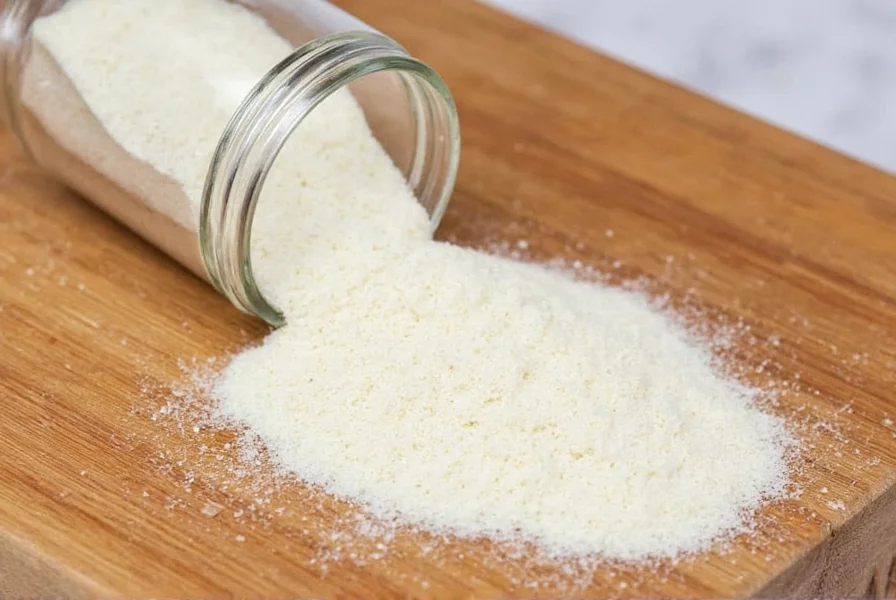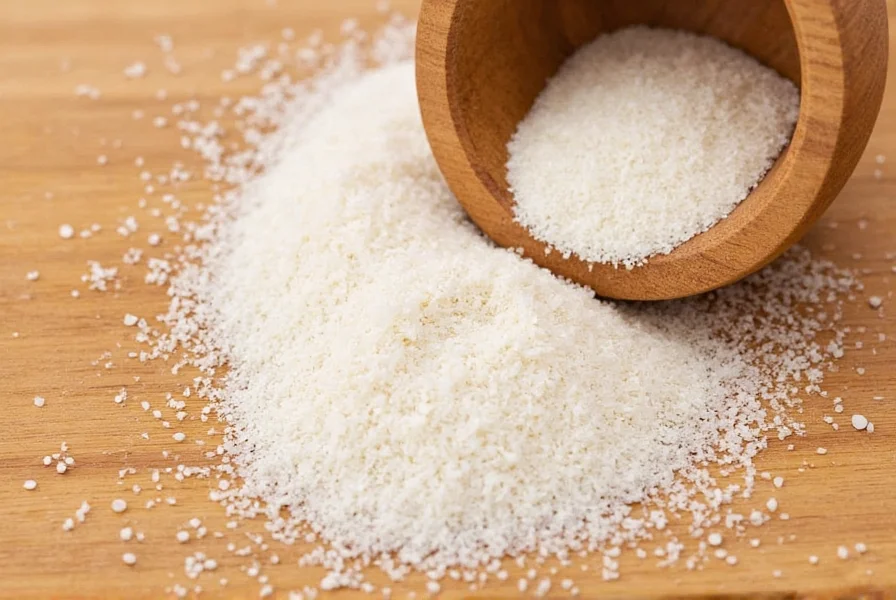Understanding what white seasoning is and how to use it properly can transform your cooking. This comprehensive guide explores the origins, ingredients, applications, and preparation methods for this culinary secret that professional chefs have relied on for generations.
Origins of White Seasoning in Japanese Cuisine
White seasoning has deep roots in Japanese culinary tradition, dating back centuries as part of the koji fermentation culture. Koji refers to Aspergillus oryzae, a beneficial mold cultivated on rice, soybeans, or other grains. Japanese home cooks and professional chefs discovered that combining koji rice with salt and water created a powerful enzymatic marinade that tenderizes proteins while developing complex flavors.
Unlike Western seasoning approaches that often focus on surface-level flavoring, white seasoning works from within the protein structure. The enzymes in koji (primarily protease and amylase) gently break down proteins and starches, resulting in remarkably tender meat with enhanced natural flavors. This traditional technique has gained international recognition as chefs worldwide adopt this gentle yet effective preparation method.
Key Ingredients in Authentic White Seasoning
Creating proper white seasoning requires just three simple ingredients, each playing a critical role in the enzymatic process:
| Ingredient | Function | Traditional Ratio |
|---|---|---|
| Rice Koji | Provides active enzymes (protease and amylase) that tenderize proteins | 50% |
| Sea Salt | Draws out moisture, enhances flavor, and controls fermentation | 10-15% |
| Water | Activates enzymes and creates proper consistency | 35-40% |
The magic happens through enzymatic action rather than chemical reactions. As the mixture rests, the protease enzymes break down protein structures in meats, while amylase converts starches to simple sugars. This dual action creates tender textures and subtle sweetness without browning the food—hence the "white" in white seasoning.

White Seasoning vs Regular Seasoning Blends
Understanding the difference between white seasoning and conventional seasoning blends is crucial for proper usage:
- Mechanism: White seasoning works enzymatically over time, while regular seasonings provide immediate surface flavoring
- Application time: Requires 12-48 hours for optimal results, compared to immediate use of dry rubs
- Color impact: Maintains natural food color ("white" preparation), unlike many marinades that cause browning
- Texture effect: Actually changes protein structure for tenderness, rather than just adding flavor
- Flavor development: Creates subtle umami depth rather than dominant seasoning flavors
Many home cooks mistakenly treat white seasoning like a dry rub, applying it immediately before cooking. This approach misses the entire enzymatic benefit. For best results with how to use white seasoning for chicken or other proteins, allow sufficient marinating time.
Practical Applications in Modern Cooking
White seasoning shines in applications where maintaining natural color and achieving exceptional tenderness are priorities:
Best Proteins for White Seasoning
- Chicken: Particularly effective for breast meat, which tends to dry out easily
- Fish: Works beautifully with delicate white fish like cod or sea bass
- Pork: Enhances loin cuts without overpowering their mild flavor
- Vegetables: Surprisingly effective for firm vegetables like cauliflower or potatoes
Professional Techniques
Chefs use white seasoning in several specialized ways beyond simple marinating:
- Dry-brining alternative: Replace salt with white seasoning for more complex flavor development
- Sauce base: Thin with additional water or stock to create flavorful cooking liquids
- Vegetable preparation: Toss vegetables in diluted white seasoning before roasting
- Grain enhancement: Mix small amounts into cooked rice or grains for subtle umami
When exploring best white seasoning for seafood, remember that delicate fish requires shorter marinating times (12-24 hours) compared to heartier proteins like chicken (24-48 hours).
Creating Homemade White Seasoning
While commercial white seasoning products exist, making your own ensures freshness and control over ingredients. Here's a reliable method for homemade white seasoning recipe:
Basic White Seasoning Recipe
Yield: Approximately 2 cups
Preparation time: 10 minutes + 3-7 days fermentation
Ingredients
- 100g rice koji (available at Asian markets or online)
- 20g sea salt (preferably non-iodized)
- 80g filtered water, room temperature
Instructions
- Combine all ingredients in a clean glass jar
- Mix thoroughly until you achieve a paste-like consistency
- Cover with breathable cloth or loosely with lid (not airtight)
- Store at room temperature (68-77°F / 20-25°C) for 3-7 days
- Stir daily to distribute moisture and salt evenly
- After 3 days, check aroma—should smell pleasantly sweet and fermented
- Refrigerate when desired flavor develops (longer fermentation = stronger flavor)

For immediate use, you can create a quick version by mixing equal parts koji powder, salt, and water, but traditional preparation yields superior enzymatic activity. When searching for where to buy white seasoning near me, check Japanese markets or health food stores, though homemade typically outperforms commercial versions.
Storage and Shelf Life
Proper storage maintains the enzymatic activity that makes white seasoning effective:
- Refrigeration: Store in airtight container for up to 3 months
- Freezing: Portion into ice cube trays for longer storage (up to 6 months)
- Signs of spoilage: Mold growth, sour or alcoholic smell, separation that doesn't remix
- Reviving: If liquid separates, simply stir back together—this is normal
The enzymes remain active even when refrigerated, though at a slower rate. This means your marinating process continues, albeit more gradually, while stored.
Substitution Options
When you need white seasoning substitute options, consider these alternatives based on your specific needs:
| If You Need | Best Substitute | Limitations |
|---|---|---|
| Enzymatic tenderizing | Pineapple or papaya puree (small amounts) | Can over-tenderize quickly; different flavor profile |
| Umami depth without browning | Diluted miso paste with rice vinegar | Lacks enzymatic action; stronger flavor |
| Quick flavor enhancement | Salt dissolved in rice wine or sake | No enzymatic tenderizing effect |
None of these alternatives perfectly replicate white seasoning's unique properties, but they can work in specific situations when you're wondering what is white seasoning in cooking alternatives.
Signature Recipes Featuring White Seasoning
Experience white seasoning's transformative effects with these approachable recipes:
Perfect Koji-Marinated Chicken Breast
- Coat chicken breasts with 2 tablespoons white seasoning per pound
- Refrigerate 24-48 hours
- Rinse lightly before cooking (optional, depending on salt tolerance)
- Cook using preferred method (pan-searing works exceptionally well)
The result: chicken breast that remains juicy even when cooked to proper internal temperature—a rarity with this lean cut.
White Seasoned Roasted Vegetables
- Mix 1 tablespoon white seasoning with 2 tablespoons olive oil
- Toss with firm vegetables (cauliflower, potatoes, carrots)
- Roast at 400°F (200°C) until tender
This technique creates beautifully caramelized edges while maintaining moisture within—the enzymatic action works even on vegetable starches.
Final Considerations for Culinary Success
Mastering white seasoning requires understanding its unique properties. Unlike conventional white seasoning vs regular seasoning approaches, this traditional technique works with food's natural chemistry rather than against it. The enzymatic process requires patience but delivers results that standard marinades cannot match.
When properly prepared and applied, white seasoning transforms ordinary ingredients into extraordinary dishes through gentle biochemical processes. Whether you're a home cook looking to improve chicken recipes or a professional chef seeking that elusive perfect texture, understanding this traditional Japanese technique offers significant culinary advantages.
What exactly is white seasoning made of?
Authentic white seasoning (shio koji) consists of just three ingredients: rice koji (fermented rice with Aspergillus oryzae mold), sea salt, and water. The traditional ratio is approximately 50% rice koji, 10-15% salt, and 35-40% water. These simple ingredients work together enzymatically to tenderize proteins and enhance natural flavors without browning the food.
How long should I marinate food in white seasoning?
Marinating times vary by protein type. For chicken and pork, 24-48 hours yields optimal results. Delicate fish and seafood require only 12-24 hours to avoid over-tenderizing. Vegetables typically need 2-4 hours. Unlike conventional marinades, white seasoning works enzymatically, so longer marinating times (within these ranges) produce increasingly tender results without making food mushy when properly prepared.
Can I use white seasoning as a dry rub?
No, white seasoning shouldn't be used as a dry rub. Its enzymatic action requires time to work properly—typically 12-48 hours depending on the ingredient. Applying it immediately before cooking misses the entire benefit. If you need immediate flavoring, consider a traditional dry rub instead. White seasoning functions more as a tenderizing marinade than a surface seasoning.
Does white seasoning contain koji mold?
Yes, authentic white seasoning contains rice koji, which is rice inoculated with Aspergillus oryzae mold. This beneficial mold produces enzymes that tenderize proteins. The mold itself is not present in active form in the final seasoning—only the enzymes it produced during fermentation. This is completely safe for consumption and has been used in Asian cuisine for centuries.
Can I make white seasoning without rice koji?
Traditional white seasoning requires rice koji as it provides the essential enzymes. While you can create flavor approximations with miso or other ingredients, they won't have the same enzymatic tenderizing properties. Koji powder is the most accessible form for home cooks and can be found at Japanese markets or online. Without koji, you're making a different seasoning altogether, not authentic white seasoning.
Frequently Asked Questions
What exactly is white seasoning made of?
Authentic white seasoning (shio koji) consists of just three ingredients: rice koji (fermented rice with Aspergillus oryzae mold), sea salt, and water. The traditional ratio is approximately 50% rice koji, 10-15% salt, and 35-40% water. These simple ingredients work together enzymatically to tenderize proteins and enhance natural flavors without browning the food.
How long should I marinate food in white seasoning?
Marinating times vary by protein type. For chicken and pork, 24-48 hours yields optimal results. Delicate fish and seafood require only 12-24 hours to avoid over-tenderizing. Vegetables typically need 2-4 hours. Unlike conventional marinades, white seasoning works enzymatically, so longer marinating times (within these ranges) produce increasingly tender results without making food mushy when properly prepared.
Can I use white seasoning as a dry rub?
No, white seasoning shouldn't be used as a dry rub. Its enzymatic action requires time to work properly—typically 12-48 hours depending on the ingredient. Applying it immediately before cooking misses the entire benefit. If you need immediate flavoring, consider a traditional dry rub instead. White seasoning functions more as a tenderizing marinade than a surface seasoning.
Does white seasoning contain koji mold?
Yes, authentic white seasoning contains rice koji, which is rice inoculated with Aspergillus oryzae mold. This beneficial mold produces enzymes that tenderize proteins. The mold itself is not present in active form in the final seasoning—only the enzymes it produced during fermentation. This is completely safe for consumption and has been used in Asian cuisine for centuries.
Can I make white seasoning without rice koji?
Traditional white seasoning requires rice koji as it provides the essential enzymes. While you can create flavor approximations with miso or other ingredients, they won't have the same enzymatic tenderizing properties. Koji powder is the most accessible form for home cooks and can be found at Japanese markets or online. Without koji, you're making a different seasoning altogether, not authentic white seasoning.











 浙公网安备
33010002000092号
浙公网安备
33010002000092号 浙B2-20120091-4
浙B2-20120091-4